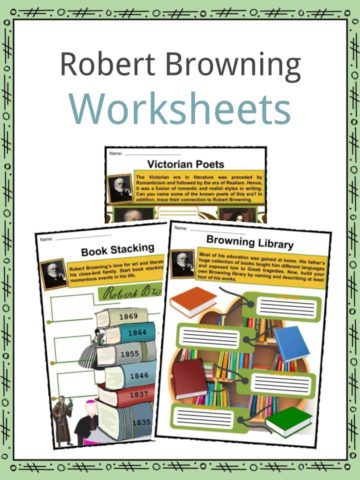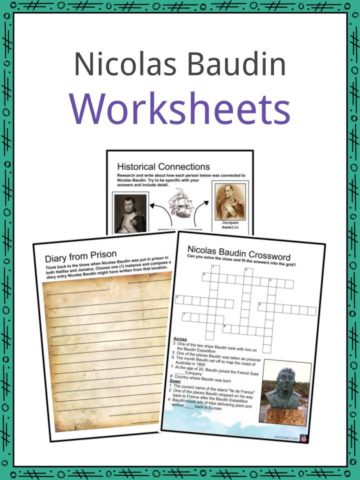Download This Sample
This sample is exclusively for KidsKonnect members!
To download this worksheet, click the button below to signup for free (it only takes a minute) and you'll be brought right back to this page to start the download!
Sign Me Up
Table of Contents
Robert Brown was a Scottish botanist who pioneered the use of the microscope in botany, which he used to describe the nucleus of a cell. He also developed the idea of what is now called the Brownian motion which explained the random movement of minute particles in a fluid.
See the fact file below for more information on the Robert Brown or alternatively, you can download our 22-page Robert Brown worksheet pack to utilise within the classroom or home environment.
Key Facts & Information
EARLY LIFE & FAMILY
- Robert Brown was born on December 21, 1773, in Montrose, Scotland.
- He was born the only son of James Brown, a Scottish Episcopalian clergyman, and Helen Brown née Taylor, a daughter of a Presbyterian minister.
- Young Robert attended Montrose Academy, a local Grammar School, and Marischal College at Aberdeen.
- When Brown was 17 years old, his family moved to Edinburgh, and he had to withdraw from the college in his fourth year.
- Robert’s father died the following year.
- Brown studied medicine at the University of Aberdeen and University of Edinburgh.
BOTANICAL STUDIES
- Robert Brown dropped out of studying medicine in 1793.
- Brown grew interested in botany and made expeditions into the Scottish Highlands to collect and study plants.
- He extensively studied the plants he collected and wrote detailed botanical descriptions of them.
- His early botanical studies motivated him to initiate correspondence with British botanists.
- He corresponded with some of the pioneering British botanists at the time, James Dickson and William Withering.
- Brown also collected plant specimens for them to study.
- Brown discovered a new species of grass, Alopecurus alpinus.
- He also delivered his first botanical paper, “The botanical history of Angus” to the Edinburgh Natural History Society in 1792.
- The paper was not published in his lifetime.
- From 1795 to 1800, he served in the British army in Ireland as an assistant surgeon.
- Brown was an established botanist before the 19th century began.
- He had been nominated to the Linnean Society of London.
- He had an algae species named after him: Conferva brownii (now named Aegagropila linnaei).
AUSTRALIA EXPEDITION
- In 1798, Sir Joseph Banks of the Royal Society recommended Brown to be a naturalist aboard the Investigator.
- In July, 1801, Brown began to sail with the expedition.
- Under the command of Matthew Flinders, the ship traveled along the Australian coasts to survey the land.
- The ship reached King George Sound, Western Australia in December, 1801.
- There was much botanical diversity in King George Sound.
- During this expedition, Brown collected many plant specimens.
MAJOR WORK
- When he got back to England in 1805, he began his extensive classification of the specimens he collected.
- He had gathered around 3,900 species!
- Five years later, Brown published partial results of the botanical studies he had done from the flora collected on the expedition.
- His publication, which is considered his major work, was entitled “Prodromus Florae Novae Hollandiae et Insulae Van Diemen.”
- Brown’s publication contributed to previous plant classification systems as well as established the foundations for Australian flora.
FURTHER ACCOMPLISHMENTS
- As a botanical researcher, Brown was very meticulous and included as many significant details as possible no matter how small they were.
- He then went on to publish his studies on the plant family Proteaceae.
- His study proved that pollen grain could help in re-classifying plants.
- In 1820, Brown inherited the extensive library and plant collection of Sir Joseph Banks.
- Seven years later, Brown became the head of the botanical department of the British Museum and bequeathed the Banks’ collection to the museum.
- Brown was also the first to distinguish gymnosperms from angiosperms.
BROWNIAN MOTION
- In 1828, Brown published “A Brief Account of Microscopical Observations,” a pamphlet about his observations of the random motion of microscopic particles.
- The particles are now known as amyloplasts.
- Brown observed that these particles were in rapid motion within pollen grains of many plants.
- After further experimentation, he noticed similar movement with other substances suspended in water.
- His observation is now known as the Brownian motion, which is a general property of matter revealing random oscillatory movement of particles suspended in fluid.
CELL NUCLEUS
- In his studies, he used the microscope extensively to observe plant specimens.
- Brown demonstrated exceptional ability in drawing conclusions from selected data.
- In 1831, he coined the term “nucleus” of a cell upon studying plants that led to his observation of the existence of a structure within plant cells.
- He was not the first to observe the nucleus of a cell, but he was the one who came up with the term nucleus.
HONOR & LEGACY
- Brown became a fellow of the Royal Society in 1810.
- He was the president of the Linnean Society for four years (1849 to 1853).
- A number of Australian plant species are named after Brown, such as Brown’s box (Eucalyptus brownii) and Brown’s banksia (Banksia brownii).
Robert Brown Worksheets
This is a fantastic bundle which includes everything you need to know about Robert Brown across 22 in-depth pages. These are ready-to-use Robert Brown worksheets that are perfect for teaching students about Robert Brown who was a Scottish botanist who pioneered the use of the microscope in botany, which he used to describe the nucleus of a cell. He also developed the idea of what is now called the Brownian motion which explained the random movement of minute particles in a fluid.
Complete List Of Included Worksheets
- Robert Brown Facts
- Biography of Brown
- Discovery Timeline
- Brown or Bluff
- Australian Discoveries
- Motion Illustration
- Under the Microscope
- Parts of a Cell
- British Botanists
- Plant Profile
- My Own Expedition
Link/cite this page
If you reference any of the content on this page on your own website, please use the code below to cite this page as the original source.
Link will appear as Robert Brown Facts & Worksheets: https://kidskonnect.com - KidsKonnect, September 26, 2019
Use With Any Curriculum
These worksheets have been specifically designed for use with any international curriculum. You can use these worksheets as-is, or edit them using Google Slides to make them more specific to your own student ability levels and curriculum standards.









